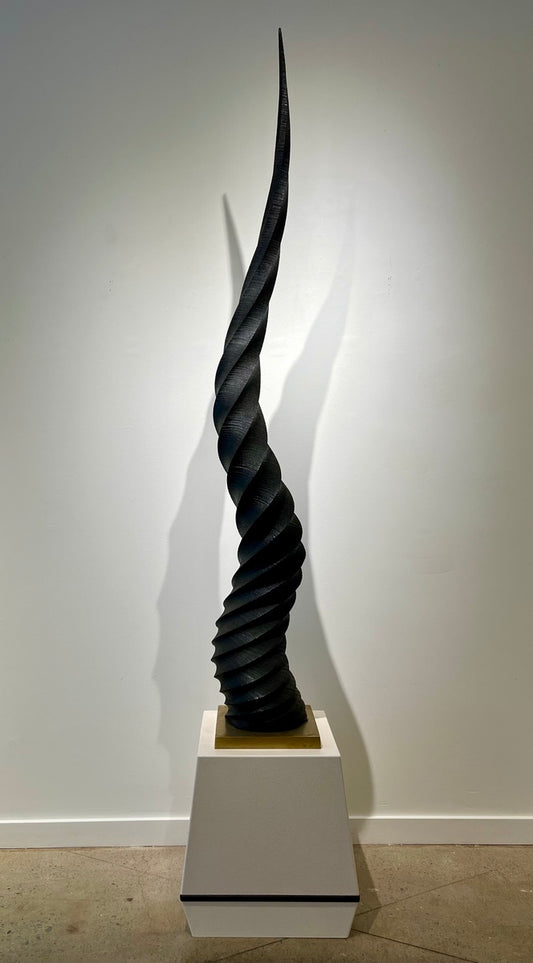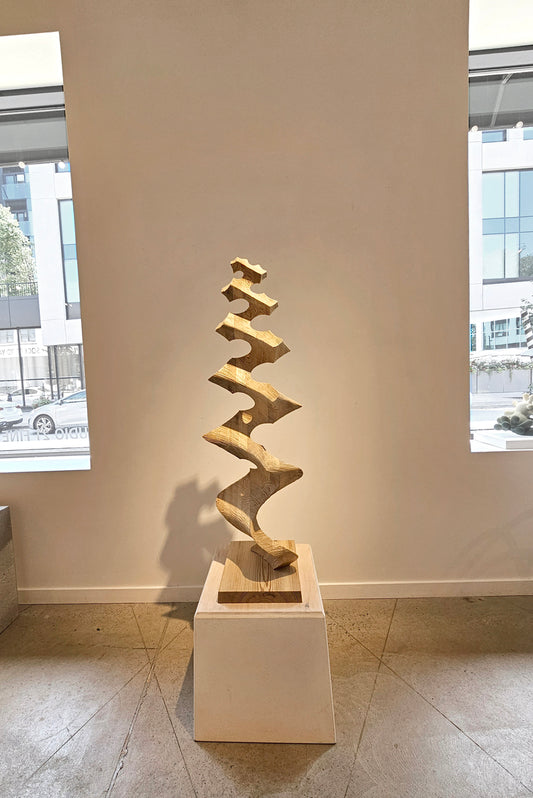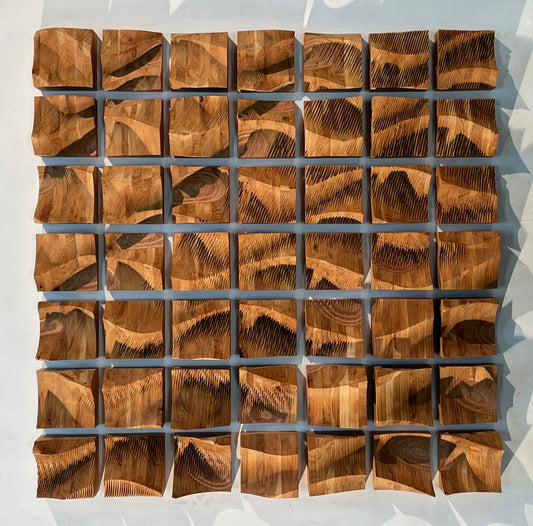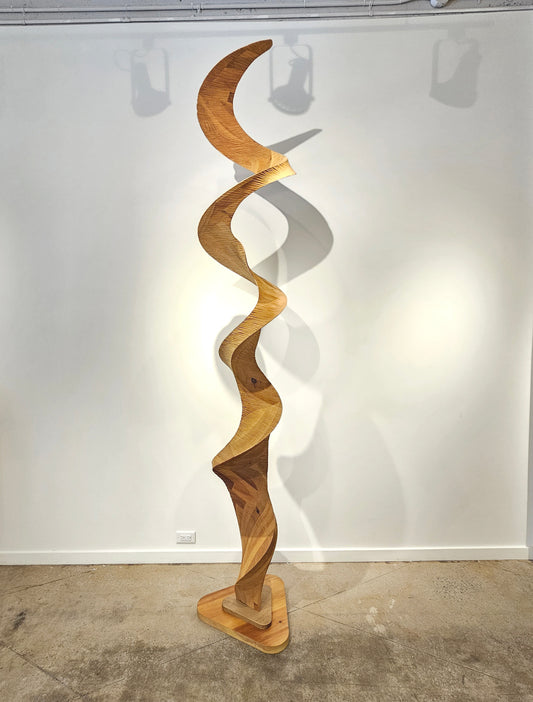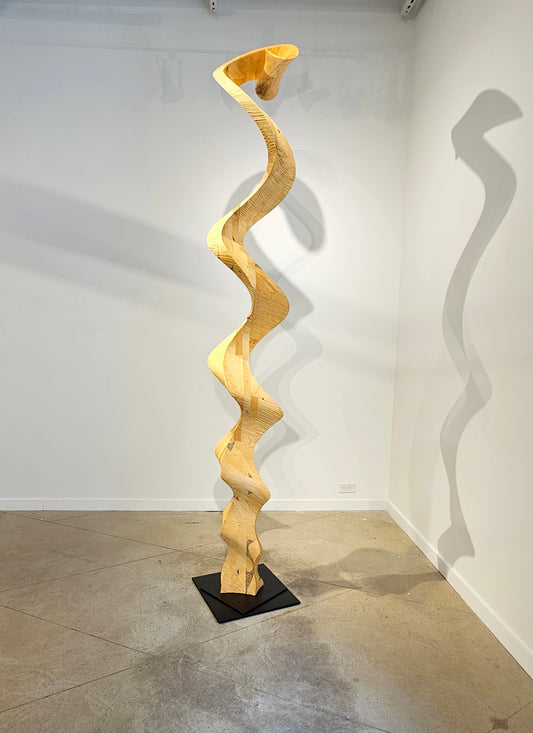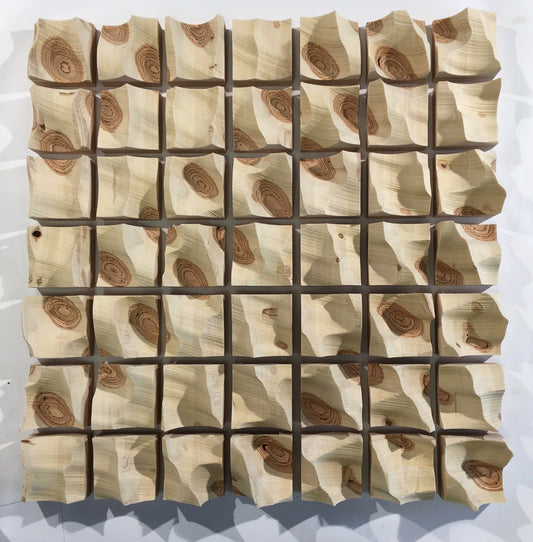John Macnab combined his wood-turning background and engineering skills to invent a 20-foot vertical lathe capable of turning large-scale sculptures to complicated formulae. With this unique tool, Macnab has been able to re-think the craft tradition and, drawing on his fascination with mathematics, science and the spiral growth of natural forms (from seashells to galaxies), to produce powerful and elegant works that bridges the gap between industrial precision and creative expression.
Being vertical, the lathe removes the constraints, like gravity and length, which a traditional horizontal lathe is prone to. Since some of his pieces are almost 30 feet long, and require an estimated 750,000 movements, or arcs, of the ‘saw,’ the space needed to do this horizontally would be restrictive. The lathe was made from a variety of found parts. For example, the ways of the lathe are made from elevator rails, the screw mechanism had to be shipped in from the US at a cost of more than the screw itself and the ‘saw’ is a buffer polisher with attachments made to hold a circular saw blade. Macnab also casts in bronze periodically.
Macnab has lived and worked in Nova Scotia since 1970. A graduate of the NS College of Geographic Sciences, he is largely self-taught as a wood-turner and machinist. His exquisite turned sculptures have been shown in galleries, art fairs, and industrial design exhibitions across the continent, and his Halifax studio has become a site exemplifying the creative relationship between tool and form. In 2009, he was honoured with the Lieutenant Governor of Nova Scotia’s Masterworks Award.
Being vertical, the lathe removes the constraints, like gravity and length, which a traditional horizontal lathe is prone to. Since some of his pieces are almost 30 feet long, and require an estimated 750,000 movements, or arcs, of the ‘saw,’ the space needed to do this horizontally would be restrictive. The lathe was made from a variety of found parts. For example, the ways of the lathe are made from elevator rails, the screw mechanism had to be shipped in from the US at a cost of more than the screw itself and the ‘saw’ is a buffer polisher with attachments made to hold a circular saw blade. Macnab also casts in bronze periodically.
Macnab has lived and worked in Nova Scotia since 1970. A graduate of the NS College of Geographic Sciences, he is largely self-taught as a wood-turner and machinist. His exquisite turned sculptures have been shown in galleries, art fairs, and industrial design exhibitions across the continent, and his Halifax studio has become a site exemplifying the creative relationship between tool and form. In 2009, he was honoured with the Lieutenant Governor of Nova Scotia’s Masterworks Award.
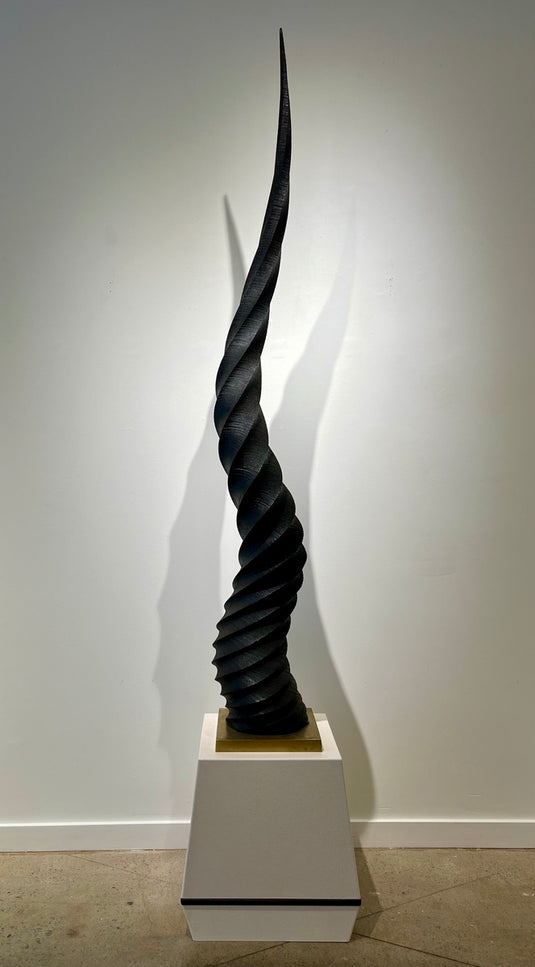 John Macnab
John Macnab
